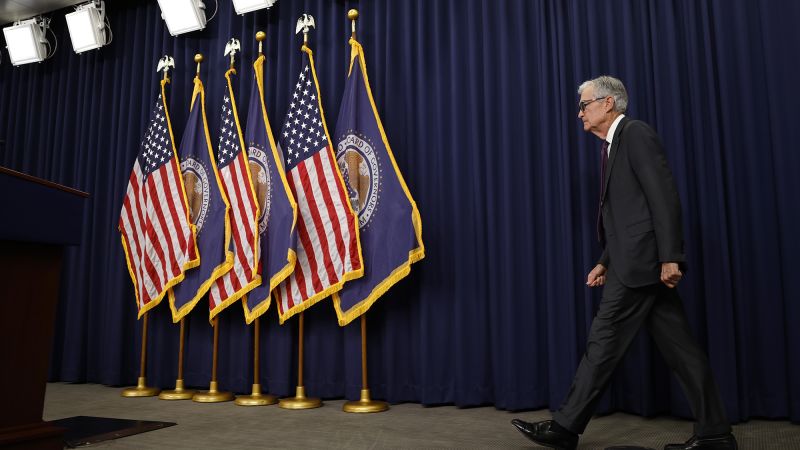President Donald Trump’s expansive economic initiative is presenting the Federal Reserve (Fed) with an unprecedented challenge that it has not faced for decades. As central bank officials gather for an important two-day policy meeting, the economic ramifications of Trump’s policies are at the forefront of their discussions. The interplay between Trump’s trade strategies, rising inflation, and employment levels is also central to the Fed’s decision-making process.
Trump’s aggressive trade war is raising serious concerns about escalating inflation and increasing unemployment rates. The predicament faced by the Fed may compel it to make a difficult choice: either prioritize job preservation or combat rising inflation. If the Fed opts to lower interest rates in an attempt to protect the economy from the potential downturn due to Trump’s tariffs, inflation might inevitably rise. Conversely, increasing rates to prevent an inflation spike generated by Trump’s trade policies could lead to higher unemployment figures.
Many analysts believe that a likely outcome from the upcoming meeting is that the Fed will announce it will maintain its benchmark lending rate within the stable range of 4.25% to 4.5%, extending the policy pause initiated in January. “The Fed is in a wait-and-see mode, and the next set of economic data could heavily influence their decision-making,” observed Dominic Pappalardo, a chief multi-asset strategist at Morningstar Wealth, during an interview with CNN.
The anticipation surrounding monetary policy decisions is palpable, and with June approaching, further economic data is expected to clarify the tariffs’ impact on the economy. Trump has consistently claimed that the Fed is lagging behind, pressuring the central bank to lower borrowing costs and vocally criticizing Fed Chair Jerome Powell.
Trump’s tariffs carry a risk of leading to “stagflation”—a harsh combination of stagnant economic growth and rising prices that troubled the U.S. economy during the late 20th century. Economists, and Powell himself, have acknowledged this dangerous possibility. During a speech on April 16, Powell mentioned the “potential tension” within the dual mandate of the Fed: to promote maximum employment and stabilize prices.
The Fed’s response to Trump’s tariffs and their repercussions will be profoundly influenced by numerous variables, particularly the nature of any inflation spikes—whether they are temporary or permanent. Fed Governor Christopher Waller expressed a proactive stance, saying, “I’m prepared to disregard any tariff-induced price effects,” indicating he would avoid overreacting to inflation increases tied to tariffs unless accompanied by significant changes in employment.
Currently, the labor market in the United States appears to be robust. Reports indicate that in April, employment surged with the addition of 177,000 jobs while the unemployment rate remained at a relatively low 4.2%. However, there are growing doubts among economists regarding the sustainability of this strength as businesses grapple with the uncertainty imposed by Trump’s fluctuating tariff policies.
The trade war has already begun to affect economic growth, as evidenced by the contraction of the Gross Domestic Product (GDP) at an annualized rate of 0.3% at the beginning of the year, a decline driven by an influx of imports as American consumers attempted to procure goods ahead of anticipated tariffs. This marked the first quarterly decline in economic output since 2022.
Fed officials have emphasized the need for substantial economic data to inform their short-term decisions amidst rising uncertainties. “I believe this is a crucial moment for us to remain patient and ensure we are proceeding in the right direction,” stated Cleveland Fed President Beth Hammack in a recent CNBC interview.
She reiterated the Fed’s readiness to act decisively when necessary, recalling that in 2022, the Fed actively raised rates to combat inflation that reached 40-year highs. Presently, the Fed is facing an intricate economic challenge that threatens its long-held independence.
Trump has been an outspoken critic of the Fed, frequently chastising the central bank for failing to decrease borrowing rates in alignment with his perspective. His criticisms have been particularly focused on Powell, leading to remarks around possible leadership changes within the Fed.
In the weeks leading up to the meeting, Trump referred to Powell in derogatory terms and suggested that he could replace him if he so desired. However, following significant concerns from top officials about potential chaos in financial markets following such a move, Trump softened his rhetoric, stating in a recent NBC interview that he does not intend to fire Powell, though he expressed confidence that he could replace him if necessary.
Powell has underscored the legal boundaries surrounding his position, asserting that the law restricts the President’s ability to remove any Fed official without clear and justified reasons. As the Fed prepares to address these significant issues, Powell is also scheduled to hold a news conference which could shed light on the Fed’s future directions amidst this evolving economic landscape.



